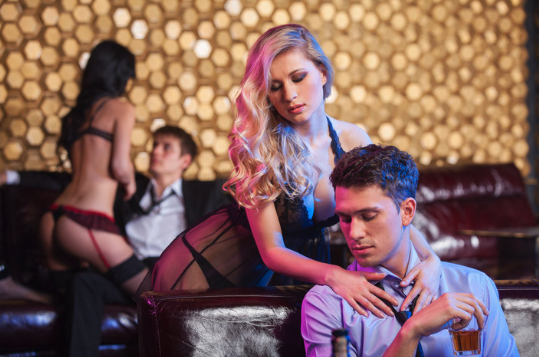Alright, let’s talk about strip clubs. It’s a loaded topic, right? We often think of them as these hyper-masculine spaces, but there’s a lot more going on beneath the surface. It’s not just about the visuals; it’s about what it says about how we understand men, masculinity, and what they’re looking for.
The Power Play: King of the Castle?
Think about it: the whole setup of a strip club is designed to make the guy feel in control. You’ve got the stage, the lights, the dancers, and the money. It’s like a performance of power. You tip, you get attention – it’s a pretty clear exchange. This fits right into that old-school idea of masculinity: being strong, in charge, and having the resources to get what you want.
We hear phrases like “making it rain,” which are basically a public display of wealth and dominance. It’s like saying, “Look at me, I’m powerful.” It’s a way for guys to perform this hyper-masculine role, to feel like they’re on top.
And then there’s the objectification of the dancers. It feeds into this idea that men should be able to control and possess women. It’s a pretty uncomfortable truth, but it’s part of the dynamic.
The Search for Connection: More Than Just a Show
But here’s the thing: it’s not just about power. A lot of guys are also looking for some kind of connection, even if it’s just a fleeting one. In a world where men are often told to bottle up their emotions, the strip club can be a place where they feel like they can let their guard down, even if just a little.
They might share stories, anxieties, or just have someone listen to them for a few minutes. It’s a kind of emotional release, even if it’s in a transactional setting. It’s a weird paradox, right? They’re paying for the attention, but they might also be craving a bit of human connection.
But then there’s the reality check. The moment they realize it’s all a performance, bought and paid for, it can lead to some pretty uncomfortable feelings. It highlights this struggle men have with vulnerability. They want that connection, but they’re often afraid to go after it in a genuine way.
The Dancers’ Perspective: More Than Just Objects
It’s easy to paint the dancers as passive objects, but that’s far from the truth. They’re navigating complex power dynamics, often with a lot more agency than we give them credit for.
They’re skilled at reading people, understanding what their patrons want, and using that to their advantage. They’re making money, yes, but they’re also controlling the interaction in a way. They’re experts at managing the illusion.
And let’s not forget that there’s a huge range of experiences within the strip club. There are male dancers, diverse sexual orientations, and all sorts of people challenging those rigid ideas of what masculinity should be. It’s not a one-size-fits-all scenario.
The Performance of Manhood: Anxious and Fragile
The strip club is also a stage for the performance of masculinity. Guys are putting on a show, trying to prove their worth. They’re spending money, acting confident, trying to impress the dancers and their friends.
It’s almost like they’re trying to compensate for some kind of insecurity. They’re seeking validation, trying to reassure themselves that they’re “man enough.” It points to how fragile the male ego can be, and how much pressure men feel to live up to these impossible standards.
A Reflection of Society: More Than Just a Club
Ultimately, the strip club is a reflection of the broader issues we have with gender, power, and intimacy. It highlights the objectification of women, the pressure on men to conform to traditional roles, and the struggle to find genuine connection in a world that often feels isolating.
It’s a messy, complex space, full of contradictions. It’s not just a place where men go to look at women; it’s a place where they grapple with their own identities, their own desires, and their own insecurities.
It’s important to remember that everyone’s experience is different. We can’t paint all men or all dancers with the same brush. There are nuances, complexities, and individual stories that deserve to be acknowledged.
So, the next time you think about strip clubs, try to look beyond the surface. It’s not just about the lights and the music; it’s about what it reveals about us as a society, about the pressures we put on men, and the ways we try to navigate the complex world of human connection.
